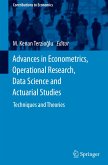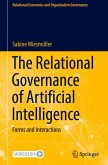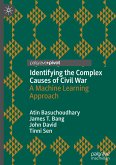The growing complexity of many real world problems is one of the biggest challenges of our time. The area of international finance is one prominent example where decision making is often fraud to mistakes, and tasks such as forecasting, trading and hedging exchange rates seem to be too difficult to expect correct or at least adequate decisions. From the high complexity of the foreign exchange market and related decision problems, the author derives the necessity to use tools from Machine Learning and Artificial Intelligence, e.g. Support Vector Machines, and to combine such methods with sophisticated financial modelling techniques. The suitability of this combination of ideas is demonstrated by an empirical study and by simulation.
Historical and recent developments at international ?nancial markets show that it is easy to loose money, while it is dif?cult to predict future developments and op- mize decision-making towards maximizing returns and minimizing risk. One of the reasons of our inability to make reliable predictions and to make optimal decisions is the growing complexity of the global economy. This is especially true for the f- eign exchange market (FX market) which is considered as one of the largest and most liquid ?nancial markets. Its grade of ef?ciencyand its complexityis one of the starting points of this volume. From the high complexity of the FX market, Christian Ullrich deduces the - cessity to use tools from machine learning and arti?cial intelligence, e.g., support vector machines, and to combine such methods with sophisticated ?nancial mod- ing techniques. The suitability of this combination of ideas is demonstrated by an empirical study and by simulation. I am pleased to introduce this book to its - dience, hoping that it will provide the reader with interesting ideas to support the understanding of FX markets and to help to improve risk management in dif?cult times. Moreover, I hope that its publication will stimulate further research to contribute to the solution of the many open questions in this area.
Historical and recent developments at international ?nancial markets show that it is easy to loose money, while it is dif?cult to predict future developments and op- mize decision-making towards maximizing returns and minimizing risk. One of the reasons of our inability to make reliable predictions and to make optimal decisions is the growing complexity of the global economy. This is especially true for the f- eign exchange market (FX market) which is considered as one of the largest and most liquid ?nancial markets. Its grade of ef?ciencyand its complexityis one of the starting points of this volume. From the high complexity of the FX market, Christian Ullrich deduces the - cessity to use tools from machine learning and arti?cial intelligence, e.g., support vector machines, and to combine such methods with sophisticated ?nancial mod- ing techniques. The suitability of this combination of ideas is demonstrated by an empirical study and by simulation. I am pleased to introduce this book to its - dience, hoping that it will provide the reader with interesting ideas to support the understanding of FX markets and to help to improve risk management in dif?cult times. Moreover, I hope that its publication will stimulate further research to contribute to the solution of the many open questions in this area.








